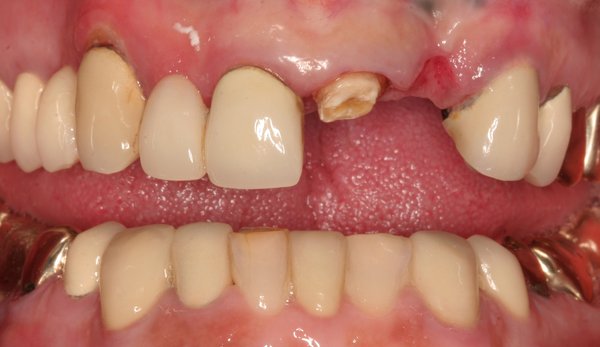 Gum disease is one of the most common oral health problems, yet it often goes undetected until it causes serious damage. Also known as periodontal disease, it can progress silently—starting with mild symptoms and, if untreated, leading to severe consequences like tooth loss.
Gum disease is one of the most common oral health problems, yet it often goes undetected until it causes serious damage. Also known as periodontal disease, it can progress silently—starting with mild symptoms and, if untreated, leading to severe consequences like tooth loss.
The Billings Dentist explores the connection between gum disease and tooth loss, the stages of gum disease, and how to prevent it. After reading, you’ll better understand the importance of early treatment and how to protect your smile.
Understanding Gum Disease: Causes and Stages
Plaque Buildup and Bacterial Infection
Gum disease starts with plaque—an invisible, sticky film of bacteria that forms on your teeth. When plaque isn’t cleaned off through brushing and flossing, it hardens into tartar, irritating the gums and causing infection.
Gingivitis – The Early Stage
The initial stage of gum disease is gingivitis. Symptoms include red, swollen, or bleeding gums during brushing. This stage is reversible, but only with proper oral hygiene and professional cleanings.
Periodontitis – The Advanced Stage
Left untreated, gingivitis can progress to periodontitis. At this stage, bacteria work their way deeper, causing gum recession, damage to the surrounding bone, and the weakening of the connective tissues that hold teeth in place. Periodontitis is a major risk factor for tooth loss.
How Untreated Gum Disease Leads to Tooth Loss
Receding Gums and Loosening Teeth
Periodontal disease causes gums to pull back from the teeth, creating pockets where more bacteria accumulate. The deeper these pockets grow, the more they compromise the foundation of your teeth, leading to loosening and eventual loss.
Spreading Infection
Bacteria don’t stop at the gums—they can infect the roots of your teeth, eventually eroding the supporting bone structure. If the infection progresses too far, it could make tooth extraction the only option.
Overall Health Concerns
Did you know periodontal disease isn’t just a threat to your teeth? Studies have linked it to broader health issues, including heart disease and diabetes. This makes addressing gum disease critical—not only for your smile but for your overall well-being.
Tooth Extraction: When It Becomes Necessary
When gum disease reaches an advanced stage, tooth extraction may be unavoidable. The Billings Dentist takes care to ensure the process is stress-free and painless.
After the removal, modern solutions like dental implants, bridges, or dentures can restore your smile. Dental implants, in particular, are an excellent, natural-looking option to replace lost teeth and regain full function.
Preventing Gum Disease and Protecting Your Teeth
Prevention is the best strategy when it comes to gum disease. Here’s how to keep your gums and teeth healthy:
Regular Checkups and Cleanings
Schedule visits with your dentist at least twice a year. Professional cleanings can remove plaque and tartar that regular brushing might miss.
Daily Oral Hygiene Habits
- Brush your teeth twice daily using fluoride toothpaste.
- Floss daily to remove particles and bacteria between teeth.
- Use antiseptic mouthwash to reduce harmful bacteria further.
Watch for Warning Signs
Be on the lookout for the warning signs of gum disease, such as bleeding gums, gum swelling, or persistent bad breath. If you notice these symptoms, seek treatment promptly.
Protect Your Smile Today
Gum disease is both preventable and treatable—when addressed early. If you’ve noticed symptoms like gum bleeding or loosening teeth, now is the time to act, not tomorrow. At The Billings Dentist, we provide expert care to prevent gum disease or manage its effects, ensuring your extraction or replacement process is smooth when necessary.
Book a consultation today, and take the first step toward a healthier smile—it’s your best defense against gum disease and tooth loss.
Contact Neal C. Johnson DMD:
406-656-2700
Location (Tap to open in Google Maps):
176 S 32nd St W Ste 3
Billings, Montana
59102







